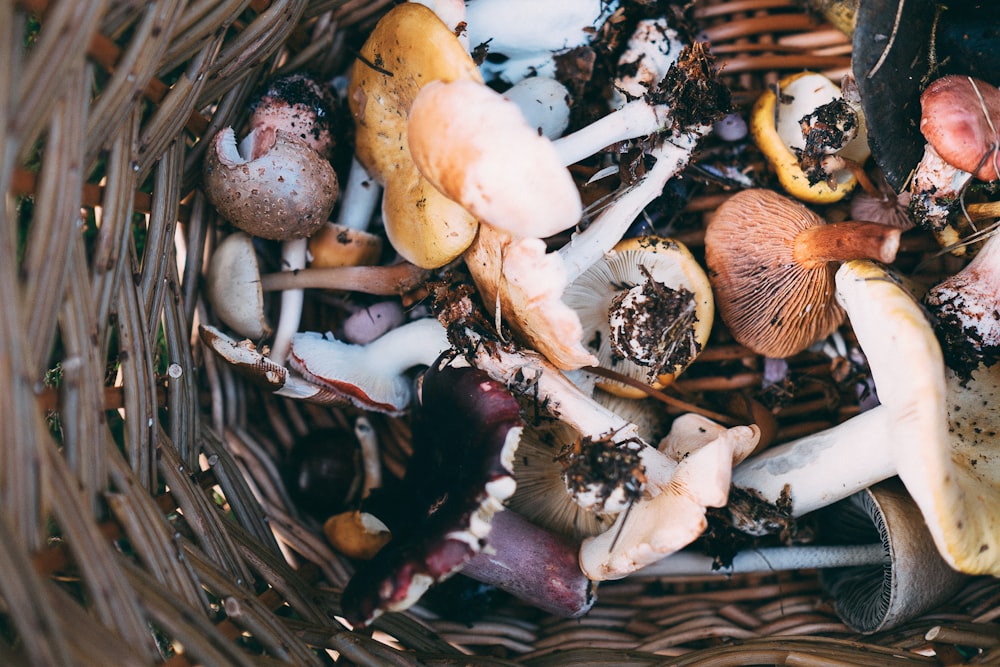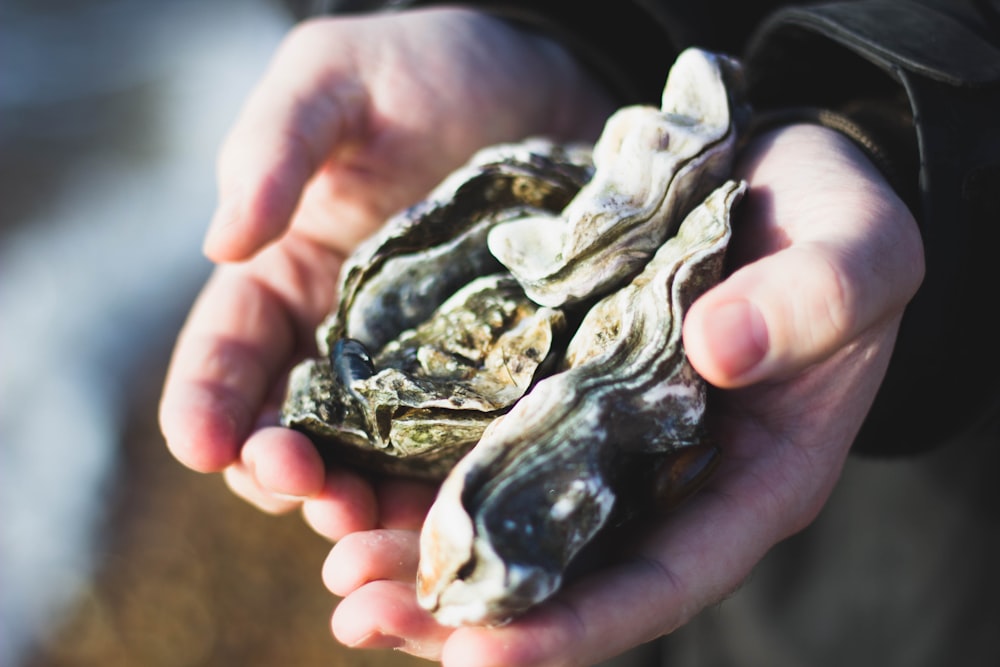Is It Possible To Create A Wild Foods App Like Forage? Here’s How.
Keyur Patel
September 12, 2025
9 min
How to Develop an App for Natural Wild Foods
Wild foods are a great source of nutrients and can be a delicious addition to any diet. However, identifying and harvesting wild foods can be challenging, especially for those who are new to it. This is where a mobile app can come in handy for custom foraging apps development.
A custom mobile app for natural wild foods can provide users with information on the identification, harvesting, and preparation of wild foods. The app can also include features such as a location-based foraging guide, a recipe database, and a community forum.

Development Considerations
There are a number of factors to consider when developing an app for natural wild foods. These include:
- The target audience: Who is the app for? Are you targeting beginners or experienced foragers?
- The content: What information will the app include? Will it focus on a specific region or type of wild food?
- The features: What features will the app have? Will it include a location-based foraging guide, a recipe database, or a community forum?
- The design: How will the app look and feel? Will it be easy to use and navigate?
- The development process: How will the app be developed? Will you use a custom development team or a third-party platform?
Let’s discuss these in detail.
The Target Audience: Who is The App For?
When developing an app, it is vital to identify the target audience to tailor users’ experience and features accordingly. The target audience for the app will depend on its specific purpose and design. If the app aims to serve as a comprehensive guide and learning tool for individuals who are new to foraging, then the primary target audience would be beginners. On the other hand, if the app focuses on catering to experienced foragers, the target audience would be individuals who already possess knowledge and practical experience in foraging.

Are you targeting beginners or experienced foragers?
Developing apps for both audiences can offer a comprehensive and inclusive platform for all levels of forgers enthusiasts. The app can provide beginners with a user-friendly interface, seamless navigation, and step-step instruction. It would focus on educating users about the basics of forging including plant identification, safe harvesting practices, and proper handling of wild edibles. For experienced forgers, the app can offer advanced tools, and custom features to enhance their experience. The app for experienced forgers can provide advanced filters and search features to help forgers to find specific plants or locations based on their interests and expertise.
It is important to note that app can also target a broader audience by catering to both beginners and experienced foragers. By offering various features and customized options, the app can accommodate users of all skill levels, and provide a platform for learning, sharing, and engaging with forging community.
What Should The Custom Foraging App be About?
The foraging app will include features related to foraging and food. You can have a feature where the user will upload a photo of the plant or fruit and the app will identify what it is and tell the user. This way users can also avoid harmful foods that are harmful and or poisonous. A database of the various plants and fauna has to be added and users should also be allowed to update it. Sort of how a wiki would work.
You should ideally have multiple photos of the plants and flora and fauna and include multiple categories to identify and categorise the plants and include guides on how to spot the plants, foraging trails and maps as per the user’s location and harvesting of the plant and the recipes to enable it as food.
You can divide the app into two sections one is for beginners where you provide simple foraging and for advanced foragers where you provide more challenges and provide more in depth foraging and rare to find plants and fruits for them to forage. Users should also be allowed to create their own trails of foraging and store it in the app. So to summarise the app will have two main sections, one where they can either partake in a predetermined foraging trail or create their own trail; the second portion of the app will be about identifying plants and foods and fruits. You can also create a premium version where you provide a more comprehensive database.
Design of The Custom Foraging App
For designing the custom foraging app, you need to focus on separating the key parts of the app, mainly the trail section and the plants database. So the design needs to incorporate that division. You may have separate features and look of the app based on the section.
This will help you in designing the app more holistically as you can put the user first and base the design on his or her needs instead of having a fixed design that may not respond well to the end user.
One of the most important features you can include is the integration of OpenAI and chatbots based on it which can provide instant information on the plants based on the pictures uploaded by the end user. By using voice enabled searches and prompts and using machine learning to identify the images and updating the algorithm as well as database based on user inputs, activities and third party information.
Ideally divide the app like this:
Foraging Section
– GPS tracking
– Custom trails
– Pre built trails
– Feedback and reviews
– User suggested trails
-Other suggested features
Plants Section
- User registration
- Social media features
- Camera
- Uploads
- ML enables algorithm to identify plants
- Other user oriented features
What features will the app have?
Plant Identification:
By offering a robust plant identification tool, users can take photos and describe the characteristics of plants they come across while forging. This feature can provide instant identification including information on whether the plant is edible, toxic, or useful for other purposes. This feature will help beginner and experienced foragers in confidently identifying plants in the wild.
Seasonal Availability:
The app could include a comprehensive database that tracks the seasonal availability of various wild edible plants. Users can access information on when specific plants are at their peak for harvesting, ensuring a higher success rate in finding edible plants during different times of the year. This feature helps users plan their foraging trips and optimize their chances of finding a variety of wild foods.
Location-Based Recommendations
With the help of this GPS feature, the app offers location-based recommendations for foraging spots. Users can explore nearby areas known for their abundance of wild edibles, such as forests, parks, or trails. The app provides detailed maps, trail routes, and information on the types of plants found in each location. This feature helps users discover new foraging spots and increases their chances of finding a diverse range of edible plants.
Plant Profile and Usage
This feature offer details of each plant such as image, description, nutritional information, preparation tips, and warning. This feature allows users to access all information about each plant’s taste, cooking method, medicinal properties, and potential culinary uses. This feature serves as an educational resource for beginners and experienced forgers to expand their knowledge and enable them to make informed decisions about the plants.
Community and User Contributions
The app fosters a vibrant foraging community by allowing users to connect with one another, share experiences, and exchange information. Users can contribute their own foraging tips, recipes, and photos, creating a collaborative space where foragers can learn from each other. The app may include forums, discussion boards, and a social media-like interface for users to interact and build a supportive network.
Safety Guidelines
The app prioritizes user safety by providing comprehensive safety guidelines for foraging. It educates users about potential risks, such as poisonous look-alike plants or contaminated areas, and offers tips on how to mitigate these risks. This feature ensures that users can forage responsibly and confidently, minimizing any potential harm.
Personalized Preferences:
The app allows users to customize their experience based on personal preferences and dietary restrictions. Users can set filters to focus on specific types of plants (e.g., fruits, mushrooms, or herbs) or specify dietary requirements (e.g., vegan, gluten-free). This feature ensures that the app provides relevant and tailored information to suit individual needs.
The Development Process: How will the app be developed?
To develop Natural wild food, hire a dedicated app development firm like IT Path Solutions which has the expertise in delivering this kind of application. Here is the development process for the natural wild food app.
Requirement Analysis
By analyzing a fully comprehensive app’s requirements and objectives. Clearly define your target audience, feature, and functionality that will go into app.
Market Research
To create a successful application, extensive market research is essential for user preference, competition, and potential opportunities, you can clarify your app’s features and functionality accordingly to the needs of target audiences. Market research will give you valuable insights into their strength, weakness, and areas for improvement.
Make Development Plan
Building a well-structured development plan is essential. Carefully analysis of suitable technology, programing language, platforms, and frameworks based on scalability, performance, and compatibility requirements. Natively developed applications for iOS/Android devices or utilizing alternate choices like Flutter and React Native is extremely important at this stage.
Hire Developer Team
Developing natural food app requires careful planning to deliver a high-quality and comprehensive product. One way to accomplish by consulting with a mobile app development team who can create scalable, interactive, and custom feature-rich applications as per requirements.
Deployment and Maintenance
To launch an app on major app stores like Apple App Store and Google play store, it is important to regularly monitor its performance, track user feedback, and make necessary updates and improvements to ensure seamless functioning across all platforms.
Conclusion
Wild foods foraging apps are a relatively unexplored space within the outdoors community app development space. But we believe that such apps offer an exciting opportunity to app entrepreneurs who can manage to create or access a database that has knowledge on wild plants and are willing to spend on AI & Ml algorithms and commit to a comprehensive development process. If you are looking to start or just want to explore the idea, contact us below.
Keyur Patel
Co-Founder
Keyur Patel is the director at IT Path Solutions, where he helps businesses develop scalable applications. With his extensive experience and visionary approach, he leads the team to create futuristic solutions. Keyur Patel has exceptional leadership skills and technical expertise in Node.js, .Net, React.js, AI/ML, and PHP frameworks. His dedication to driving digital transformation makes him an invaluable asset to the company.
Get in Touch
Search
Blog Categories